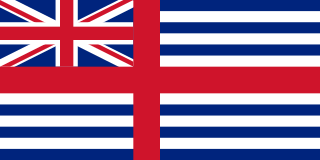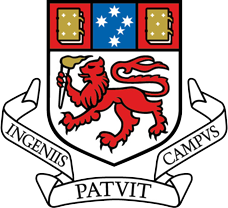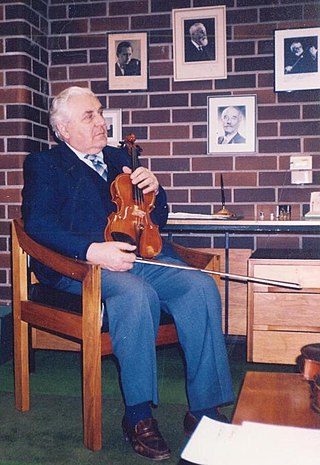Related Research Articles

Van Diemen's Land was the colonial name of the island of Tasmania used by the British during the European exploration and colonisation of Australia in the 19th century. The island was previously discovered and named by the Dutch in 1642. Explorer Abel Tasman discovered the island, working under the sponsorship of Anthony van Diemen, the Governor-General of the Dutch East Indies. The British retained the name when they established a settlement in 1803 before it became a separate colony in 1825. Its penal colonies became notorious destinations for the transportation of convicts due to the harsh environment, isolation and reputation for being inescapable.

Truganini, also known as Lallah Rookh was an Aboriginal Tasmanian woman. She was one of the last native speakers of the Tasmanian languages and one of the last individuals solely of Aboriginal Tasmanian descent.

Lake Pedder, once a glacial outwash lake, is a man-made impoundment and diversion lake located in the southwest of Tasmania, Australia. In addition to its natural catchment from the Frankland Range, the lake is formed by the 1972 damming of the Serpentine and Huon rivers by the Hydro Electric Commission of Tasmania for the purposes of hydroelectric power generation.

The University of Tasmania (UTAS) is a public research university, primarily located in Tasmania, Australia. Founded in 1890, it is Australia's fourth oldest university. Christ College, one of the university's residential colleges, first proposed in 1840 in Lieutenant-Governor Sir John Franklin's Legislative Council, was modelled on the Oxford and Cambridge colleges, and was founded in 1846, making it the oldest tertiary institution in the country. The university is a sandstone university, a member of the international Association of Commonwealth Universities, and the Association of Southeast Asian Institutions of Higher Learning.

Hydro Tasmania, known for most of its history as the Hydro-Electric Commission (HEC) or The Hydro, is the trading name of the Hydro-Electric Corporation, a Tasmanian Government business enterprise which is the predominant electricity generator in the state of Tasmania, Australia. The Hydro was originally oriented towards hydro-electricity, due to Tasmania's dramatic topography and relatively high rainfall in the central and western parts of the state. Today Hydro Tasmania operates thirty hydro-electric and one gas power station, and is a joint owner in three wind farms.

The Wilderness Society is an Australian, community-based, not-for-profit non-governmental environmental advocacy organisation.

The Tasmanian languages were the languages indigenous to the island of Tasmania, used by Aboriginal Tasmanians. The languages were last used for daily communication in the 1830s, although the terminal speaker, Fanny Cochrane Smith, survived until 1905.
Sydney Sparkes Orr was Professor of Philosophy at the University of Tasmania and the centre of the "Orr case", a celebrated academic scandal of the 1950s.

Schouten Island, part of the Schouten Island Group, is an island with an area of approximately 28 square kilometres (11 sq mi) lying close to the eastern coast of Tasmania, Australia, located 1.6 kilometres (0.99 mi) south of the Freycinet Peninsula and is a part of Freycinet National Park. The palawa kani place name for the island is mayaluwarana.

The structure of observed learning outcomes (SOLO) taxonomy is a model that describes levels of increasing complexity in students' understanding of subjects. It was proposed by John B. Biggs and Kevin F. Collis.
Constructive alignment is a principle used for devising teaching and learning activities, and assessment tasks, that directly address the intended learning outcomes (ILOs) in a way not typically achieved in traditional lectures, tutorial classes and examinations. Constructive alignment was devised by Professor John B. Biggs, and represents a marriage between a constructivist understanding of the nature of learning, and an aligned design for outcomes-based teaching education.
Palawa kani is a constructed language created by the Tasmanian Aboriginal Centre as a composite Tasmanian language, based on reconstructed vocabulary from the limited accounts of the various languages once spoken by the Aboriginal people living on the island now known as Tasmania or lutruwita.

The Stacks Bluff is a peak in northeast Tasmania, Australia. The mountain is situated on the Ben Lomond plateau.

Tasmanian Gothic is a genre of Tasmanian literature that merges traditions of Gothic fiction with the history and natural features of Tasmania, an island state south of the main Australian continent. Tasmanian Gothic has inspired works in other artistic media, including theatre and film.
Winifred Mary Curtis was a British-born Australian botanist, author and a pioneer researcher in plant embryology and cytology who played a prominent role in the department of botany at the University of Tasmania (UTAS), where the main plant science laboratory is named in her honour.

Jan Boleslav Sedivka, Czech-born, was one of Australia's foremost violinists and teachers.
Although the noun forms of the three words aim, objective and goal are often used synonymously, professionals in organised education define the educational aims and objectives more narrowly and consider them to be distinct from each other: aims are concerned with purpose whereas objectives are concerned with achievement.
Charles Denison (Deny) King was an Australian naturalist, ornithologist, environmentalist, painter and tin miner. He spent fifty-five years living in Melaleuca in Port Davey, part of the remote South West Wilderness of Tasmania where he discovered the extinct shrub, Banksia kingii, among other major exploits.
Design-focused evaluation (DFE) is an approach to the evaluation of educational quality.

Neil Haddon is a British-Australian painter. His paintings display a wide variety of influences and styles, from hard edge geometric abstraction to looser expressive figurative painting. Haddon currently lives and works in Hobart, Tasmania.
References
- ↑ Constructive Alignment Archived 20 September 2013 at the Wayback Machine at the Higher Education Academy
- ↑ Teaching Teaching & Understanding Understanding (short-film about constructive alignment)
- ↑ Biggs, John B. (2013). Changing universities : a memoir about academe in different places and times. [Hawthorn East, Victoria]. ISBN 978-0-9870865-9-4. OCLC 857761022.
{{cite book}}: CS1 maint: location missing publisher (link) - ↑ Biggs, John Burville (1962). The psychological relationship between cognitive and affective factors in arithmetical performance. london.ac.uk (PhD thesis). University of London. OCLC 1006277297. Archived from the original on 7 July 2020. Retrieved 30 April 2024.
- ↑ Biggs, J. B. and Tang, C. (2011). Teaching for quality learning at university. Open University Press/Mc Graw-Hill Education. [ ISBN missing ]
- ↑ Biggs, John. (2013) Changing Universities Strictly Literary [ ISBN missing ]
- ↑ "BIGGS, John Burville". Australian Honours Search Facility, Dept of Prime Minister & Cabinet. Archived from the original on 12 June 2018. Retrieved 9 June 2018.
- ↑ "Award Winners: 2021 AAUT Awards" (PDF). Universities Australia. 23 February 2022. Archived (PDF) from the original on 26 February 2022. Retrieved 26 February 2022.
- ↑ Biggs, J. B. (2003). The Girl in the Golden House. Pandanus Books. [ ISBN missing ]
- ↑ Biggs, J. B. (2006) Project Integrens Sid Harta. [ ISBN missing ]
- ↑ Biggs, J. B. (2007) Disguises. Burville Books [ ISBN missing ]
- ↑ Biggs, J.B. (2008). Tin Dragons Maygog Publishing [ ISBN missing ]
- ↑ Biggs, John (2011). Tasmania Over Five Generations: Return to Van Diemen's Land? Forty Degrees South.
- ↑ Biggs, J.B. (2012) Towards Forgiveness: Sino-Tasmanian Stories from Two Islands Ginninderra Press [ ISBN missing ]
- ↑ Biggs, John. (2013) From Ashes to Ashes Interactive Publications [ ISBN missing ]